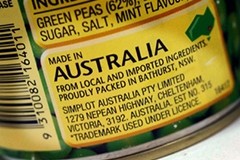Australia
Australia’s food and grocery industry reports year of ups and downs

This represents an increase of A$3bn (US$2.6bn) over last year’s figures as the industry continues to maintain steady growth with its bottom line.
Calling on data released by the Australian Bureau of Statistics, the sixth edition of the report it also found that food and beverage processing contributed A$91.6bn (US$79.9bn), grocery A$16.2bn (US$14.1bn) and fresh produce A$6.2bn (US$5.4bn).
Meat manufacturing once again accounted for the largest share of turnover, at 24.6%, although it had contracted slightly by 0.7% over last year’s figures. Dairy manufacturing came in second at 14.7%, showing an increase of 9.1%. Meanwhile, seafood processing reported a decline of 4.2%.
The overall food industry represented 28.9% of total Australian manufacturing by turnover, the AGFC revealed.
Fewer food employees
Employment was slightly down on last year, with just under 300,000 staff employed by the industry—a 0.9% reduction over 2013—while 183 fewer businesses are involved in food processing and production this year with 27,469 companies currently in the industry.
“Turnover is up slightly but job numbers are down. This is a microcosm of the broader economy – growth is below trend and unemployment is creeping higher,” Terry O’Brien, chairman of the AFGC, remarked in the report’s foreword.
“In the food and grocery sector, the juxtaposition of growth and declining employment reflects the reality of companies automating to reduce labour costs and drive higher efficiency and productivity.”
International trade on the up
In spite of slightly reduced corporate might, international trade recorded a distinct increase of 7.3%, to A$55.9bn (US$48.7bn), when imports and exports were considered as a whole.
In real terms, the value of imports increased by 6.1%, while exports grew by 8.6%. This represented an overall trade deficit contraction of 20.9% to A$1.8bn (US$1.6bn), with total imports valued at A$28.8bn (US$25.1bn), and exports amounting to A$27bn (US$23.5bn).
The report cited the weakening of the Australian dollar and increasing global demand, particularly in processed meat, seafood and cheese and other dairy as key drivers for export growth.
Meanwhile, the AGFC has called on the federal government to help tackle the burdens of excessive regulation, outdated transport rules and inflexible workplace awards.











